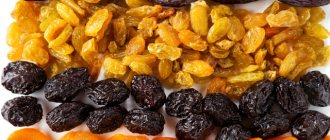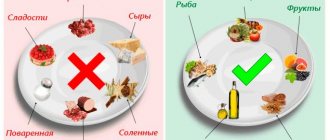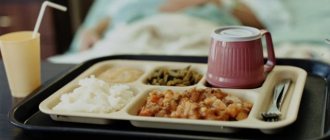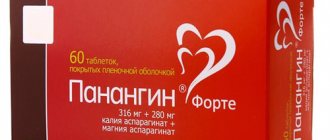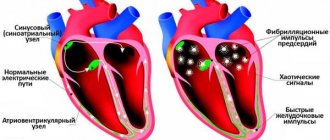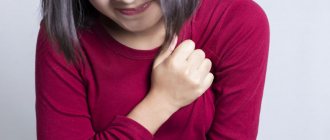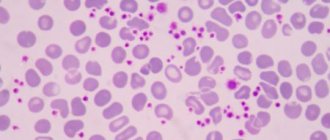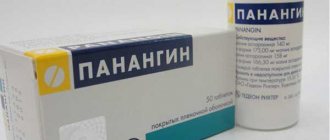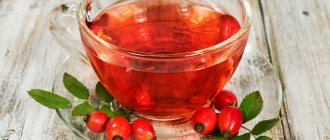A person can eat the food he likes for decades and still not know about its harm or benefit to the heart. If you have identified diseases of the cardiovascular system, then first of all you should pay attention to your diet. Otherwise, even drug treatment will not be as effective when consuming the same foods that are harmful to the heart.
Nutrition for arrhythmia must be dietary, as this helps improve the prognosis of the disease, and sometimes prevent repeated attacks of arrhythmia. For example, eliminating table salt alone allows you to reduce or completely eliminate medication intake.
With arrhythmia, both an increase in heart rate and a decrease in heart rate are often observed. In some cases, the pathology is asymptomatic, but sometimes careful drug treatment is required, which is supplemented with dietary nutrition for greater effectiveness.
To determine the form of rhythm disturbance, various research methods are used. At the very beginning, an electrocardiogram is performed, after which 24-hour ECG monitoring, ultrasound of the heart are performed, and, if necessary, an electrophysiological study is performed. After accurately establishing the type of pathology, treatment is prescribed, necessarily supplemented with dietary nutrition. But not everyone knows which foods are most useful for arrhythmia.
Video Nutrition for heart disease (part 1)
Nutrition for atrial fibrillation, tachycardia and extrasystole
The diet for cardiac arrhythmia and high blood pressure is designed to eliminate the causes of the disease. Proper nutrition provides the following positive effects:
- Maintaining blood electrolyte balance by limiting salt intake and the supply of essential microelements (potassium and magnesium).
- Slowing down atherosclerotic processes in the coronary vessels. To achieve this, a ban on animal fats is introduced and food consumption with lecithin (peas, buckwheat), methionine (cottage cheese, oatmeal), and dietary fiber is increased.
- Maintaining a balance of processes in the central nervous system, excluding spicy foods, alcohol, coffee and the intake of extractive substances. Regularity of food intake plays an important role (up to 5 times a day strictly according to the established schedule).
- Reduced vascular permeability. This effect is achieved by increasing the content of vitamins C and P in food.
- Improvement of blood clotting indicators. Preference is given to seafood.
Attention! The diet must be combined with therapeutic treatment. By itself, it cannot cure the disease, but it can increase the effectiveness of medications. The different course of cardiac arrhythmia causes a certain adjustment in the principles of dietary nutrition:
- Atrial fibrillation. In fact, it occurs as a result of a disruption in the passage of impulses between the heart and brain centers. With this pathology, it is especially important to ensure regular food intake in small portions. An overfilled stomach additionally irritates the vagus nerve receptors, causing dysfunction of the sinus node. Eating before bed is dangerous. A heart attack is provoked by alcohol, as well as strong coffee and tea. It is necessary to sharply limit animal fats, giving preference to foods rich in potassium, magnesium, phosphorus, calcium, and vitamin D.
- Tachycardia. When it appears, the following nutritional rules must be observed: regularity and increased frequency of intake, dosing of portions; significant limitation of sweets consumption; fat consumption no more than 55 g per day; holding fasting days; increased intake of potassium and magnesium; reducing the calorie content of foods. Experts recommend using a dairy-plant diet.
- Extrasystole. With this type of arrhythmia, it is recommended to focus on vegetables (tomatoes, cucumbers, beets, potatoes, cabbage), fruits (pears, apricots, apples, peaches, avocados), berries (raspberries, blackberries), dried fruits, nuts, beans, cereals. , greens, dairy products, honey. It is useful to use infusions and decoctions of medicinal herbs. It is advisable to use products with a calming effect.
While taking Warfarin
Drug therapy for serious forms of arrhythmia involves long-term use of the drug Warfarin. In this case, the blood composition changes, in particular blood clotting. When taking Warfarin, it is especially important to follow specific rules for eating. First of all, the use of dietary supplements and an increase in vitamin intake requires consultation with a doctor.
Warfarin contains a significant amount of vitamin K, and therefore additional intake through food should be limited. The daily requirement for the vitamin is 110 mcg. Its highest content is found in spinach, parsley, green cabbage (about 3500-5500 mcg/kg), green tea (7500 mcg/l), as well as legumes, mayonnaise, soybean and olive oil. The minimum content of vitamin K is found in milk, meat, bakery products, mushrooms, vegetables and non-green fruits.
Reviews and results
This therapeutic diet must be adhered to constantly. The diet is well tolerated because the diet is varied. Limiting non-healthy foods can help you lose weight and improve your overall health. However, some patients find it difficult to tolerate a reduction in the amount of salt and sweets and they allow themselves “dietary liberties”.
- “... The first attack of atrial fibrillation was 3 years ago. It was quickly stopped and supportive treatment was prescribed. The doctor warned that if you have atrial fibrillation, you should not be nervous, drink alcohol or overeat. The rhythm dropped after the feast: copious amounts of food and drink. The pills I carry with me didn’t help either. I ended up in the department again. This time it took a long time to restore the rhythm. During the examination, high cholesterol was revealed, and over the course of 3 years I gained a little weight. They advised me to go on a diet and recommended losing weight. This time I took the recommendations more seriously. The transition to a healthy diet was difficult - limiting salt, sweets, favorite smoked foods, fried meat and lard. I only stayed strictly for a month, then expanded my diet a little. Today I eat a lot of vegetables, dried fruits, honey, seeds, bread only with bran, baked fish and chicken. I ate this way for six months. The weight dropped, there were no attacks, since during this time I did not allow myself any alcohol”;
- “... I regularly see a cardiologist about arrhythmia. I try not to freak out, I don’t overeat, I don’t drink alcohol, and I gave up tea. Replaced it with juices, fruit drinks, and herbal decoctions. The doctor said that it was impossible to do without a diet, since with age my blood pressure began to increase and my weight gained. If you lose weight and eat right, you can keep your arrhythmia in check. I switched to boiled or baked meat and chicken, I don’t eat fried food at all, I cook for my family when I go out. I try to eat more vegetables and fruits. In winter, this is more difficult, but I buy frozen vegetable mixtures and simmer them in water with a small amount of vegetable oil. I practically don’t eat bread or pastries—only bread without yeast. As a result, my weight decreased and it became easier to move and breathe. I haven’t had any attacks, but I take pills all the time.”
Features for women and men
The principles of organizing proper nutrition are the same for men and women, however, when preparing a diet, it is necessary to take into account some physiological differences.
Women have an increased need for iron (especially during menstruation). Its main supplier is red meat. Iodine plays an important role in ensuring the normal functioning of the endocrine system.
You should pay attention to seafood, sea fish and feijoa fruits. Calcium is essential for bone structures. It is important to maintain a high level of B vitamins. The daily calorie requirement for the female body is 2300-2500 kcal. The male body is characterized by more active metabolic processes. Maintaining muscle mass requires a steady supply of protein. Zinc is very important for men. It comes from seafood, carrots, nuts, pumpkin seeds, and beef. Fiber is necessary for normal bowel function. The daily caloric intake for men is 2700-2900 kcal.
Interesting article: Effective heart diet for weight loss
In addition, when developing a diet, it is important to take into account gender differences in nutritional psychology. A woman needs variety in the menu, while men are more indifferent to this. For a woman, the taste and aromas of products and external perception are more important.
conclusions
Diseases of the cardiovascular system occupy first place in the ranking of causes of death in developed countries. Today, atrial fibrillation, along with extrasystole, is increasingly being detected in young people. The chances of getting heart rhythm disturbances are increased by physical inactivity, obesity, smoking, alcoholism, and hereditary family history.
Nutrition for atrial fibrillation must fully meet the body’s energy needs and be varied, complete, and balanced. Obese patients are advised to reduce their daily caloric intake to 2500 kcal. A balanced diet and systematic use of antiarrhythmic drugs makes it possible to reduce the overall cardiac risk, reduce the frequency of paroxysms and alleviate the course of the disease.
The following sources of information were used to prepare the material.
Contraindications by age
A diet for cardiac arrhythmia is necessary at any age. However, it should be set taking into account age characteristics. In childhood and adolescence, it is important not to disrupt physical and hormonal development. Diets with significant restrictions on fats and proteins should not be used. Calorie reduction is carried out with control of the intake of simple carbohydrates. Sweet drinks and fast food products are contraindicated. Sweets are limited.
Adults are characterized by a slowdown in metabolic processes on average every 10 years, which is taken into account when compiling a diet. Up to 25 years of age, metabolic processes are most rapid , which requires maximum caloric intake of food. At this age, hormonal imbalance due to poor nutrition is especially dangerous. After 40 years, processes slow down noticeably, blood pH shifts to the alkaline side. At this age, poor nutrition can lead to diabetes. You should limit your intake of fast carbohydrates (sweets, baked goods, pasta). Beef, butter, sour cream, wheat bread and sugar have a negative effect.
What you need to know when planning a diet
In order to improve the functioning of the heart, the body needs three essential microelements:
Let's consider the beneficial properties of each of them. Experts consider magnesium deficiency in food to be the main cause of all cardiovascular diseases.
Without magnesium, vital reactions occurring in the human body cannot occur. He:
- is a protective barrier against infections;
- helps blood clotting;
- participates in the formation of bone tissue;
- regulates the functioning of internal organs;
- calms the nervous system.
Potassium ensures a constant composition of the fluid that fills the cells and intercellular space, regulates heart contractions, and maintains blood pressure at a normal level.
Calcium successfully fights hypertension and complications resulting from high blood pressure, such as:
- stroke;
- cardiomyopathy (this disease is also called “overworked heart”);
- heart failure.
Not only health, but also human life depends on the work of the muscle.
In this regard, the doctor is faced with the task of teaching the patient how to treat and eat properly, because magnesium, potassium and calcium obtained from food in combination with taking the necessary medications can ensure normal recovery and improve the quality of life. When creating a diet for atrial fibrillation, not only the set of products is taken into account, but also their composition.
Healthy foods for the heart
Experts have compiled the following rating of foods that are beneficial for the heart muscle:
- Products enriched with vitamin E - cheese, cottage cheese, legumes.
- Natural grape juice. The most effective product is obtained from red grape varieties. It is recommended to drink 200-250 ml daily.
- Low fat milk. Fresh milk is especially useful. The recommended daily intake is 300-400 ml.
- Sea fish. The omega-3 fatty acid it contains has a beneficial effect. Particularly notable are: mackerel, herring, cod, salmon.
- Nuts. Walnuts have proven to be excellent, and should be eaten 5-6 times a day.
Interesting article: Effective diet for hypertensive patients with heart and vascular diseases
The diet will be incomplete without increasing the consumption of fruits (apricot, plum, pear, apples, pomegranate, melon and avocado), berries (raspberries, currants, watermelon and grapes), citrus fruits (especially grapefruit), vegetables (tomatoes, red bell peppers, cucumbers , turnips, cabbage, potatoes, beets and pumpkin), herbs (parsley, rosemary), garlic, legumes, cereals, flaxseed vegetable oil. Drinks include natural (freshly squeezed) juices, green tea, tea with raspberries, linden flowers, and lemon balm.
Drinking regime
The diet prescribed for cardiac arrhythmia must include a drinking regimen. A person will need to consume at least 2.5 liters of fluid per day. In this case, only water is taken into account, but also all liquids entering the body. For example, doctors recommend drinking green tea for heart arrhythmia, rosehip decoction, fruit compotes and fruit drinks, and jelly. In addition, first courses are also taken into account.
For arrhythmia, it is useful to consume weak broths made from vegetables and meat.
However, despite recommendations for fluid intake, some people have certain contraindications. Often with heart disease, patients experience swelling. In addition, they also suffer from kidney diseases. In such a situation, you should consult a specialist about the amount of fluid required per day. Water should be drunk half an hour after eating food. This will allow the products to be better absorbed and will not cause a feeling of heaviness in the gastrointestinal tract.
What is forbidden to eat?
In case of cardiac arrhythmia, it is necessary to sharply limit, or better yet eliminate, the consumption of the following products:
- sausages and smoked products, lard, bacon containing spices, salt, stabilizers and preservatives;
- caffeinated drinks (coffee, black tea);
- pickles and marinades;
- offal;
- dishes prepared by frying;
- semi-finished products and products from the fast food category;
- fatty foods (meat and fatty fish);
- spicy and salty foods, spices.
Important! Alcohol is completely prohibited. You can't drink carbonated drinks. Sweets, chocolate and ice cream are subject to significant restrictions.
List of prohibited products
The diet for atrial fibrillation excludes the following foods:
- Caffeine-containing drinks - strong coffee, tea (excessive stimulation of the heart).
- Smoked sausages, bacon (excess animal fats, salt).
- Pickles, pickled foods, canned food (excess salt, provoking additional fluid intake).
- Fatty meats and offal (excess cholesterol and calories).
- Whole fat dairy products.
- Butter and cream pastries, white chocolate (refractory fats, excess sugar).
- Semi-finished products, unhealthy fast food (contribute to weight gain).
- Hot sauces, spices, seasonings (reflexively stimulate cardiac activity).
- Alcohol (causes spasm of the coronary arteries, impairs myocardial nutrition).
Treatment with folk remedies
Folk remedies have been used to treat arrhythmia since ancient times. The merits of garlic and lemon are especially noted. We recommend the following recipes:
- With honey. Recipe: garlic (5 heads), lemon juice from 10 fruits, honey (1 l). The mixture is infused for 7-8 days. The product is taken daily, 2 tablespoons.
- Another option is with honey. Garlic (1 head), one lemon are ground in a meat grinder and poured with honey (100 ml). The mixture is infused for 7-8 days. Take 1 teaspoon before meals 3 times a day.
- Alcohol tincture of garlic. Prepared at the rate of 3 cloves per 100 ml of alcohol. Infuses for 14-15 days. Take half a teaspoon before meals.
- Garlic with celery. Celery root (1 tablespoon) and garlic (1 clove) are poured with boiling water (200 ml) and left for 2.5-3 hours. The product is taken 3 times a day, half a glass.
On a note! When using garlic, keep in mind that a large amount can have a negative effect. The maximum daily dose is 3 cloves.
General nutrition rules
When creating a new healthy diet for the heart, it is necessary to take into account many factors: the chemical components of food, the percentage of proteins, fats and carbohydrates in dishes, the quantity and quality of foods, as well as the meal schedule. It must be remembered that nutrition for cardiac arrhythmia is dietary.
The basic rules for eating food and recommendations for its composition are outlined below:
- It is important to limit as much as possible or completely eliminate salty, sweet and starchy foods from your diet.
- You need to listen to your body and not force yourself to eat for future use or follow a food schedule, eating forcefully.
- It is not recommended to eat food 3 hours before bedtime.
- While eating, it is important to focus on eating without being distracted by watching movies, reading or socializing: being absorbed in other activities, you will eat “automatically” and are guaranteed to overeat.
- It is necessary to chew each piece of food thoroughly, so satiety will come faster.
- It is recommended to finish eating at the moment when it seems that you are still slightly hungry - this impression is deceptive, since the real feeling of fullness comes 15-20 minutes after eating, you just need to wait.
- If you have arrhythmia, it is better to avoid foods that are too hot or ice-cold; the temperature of the food should be comfortable.
- Never snack on the road.
- The “golden rule” of any diet: eat often, but in small portions, so you will not experience severe hunger and avoid overeating; The recommended number of meals per day is 5 times.
When following a diet for arrhythmia, it is also important not to forget about the drinking regime. Water should be regularly supplied to the body, as this will maintain normal blood density and will not worsen the condition of the cardiovascular system. The recommended amount of fluid consumed for an adult is from 1.5 to 2 liters per day. You should also not overuse liquids: this puts a lot of strain on the body.
Menu for the week
When planning a diet, the diet should be developed in conjunction with a professional nutritionist. Below is a sample menu for the week:
Monday
- For breakfast – milk buckwheat porridge, grape juice.
- Lunch – vegetable soup, rye bread.
- Dinner – boiled chicken with a side dish of rice and vegetables.
- Before going to bed, it is recommended to drink fermented baked milk (200 ml).
Tuesday
- Breakfast – a bread sandwich with jam, tea with lemon balm.
- Lunch – chicken cooked in the oven, vegetable salad, black bread.
- Dinner – potatoes with boiled vegetables.
- Before bed – rosehip decoction (250 ml).
Wednesday
- Breakfast – fruit salad with yogurt.
- Lunch – pasta with mild tomato sauce and sesame seeds, juice from a mixture of apple and grapes.
- Dinner – turkey and side dish of corn.
- Before bed - yogurt.
Thursday
- Breakfast – cereal flakes with yogurt.
- Lunch – sea fish with mashed potatoes, dried apricot compote.
- Dinner – vegetable stew with rice side dish.
- Finish the day with a glass of herbal tea.
Friday
- Breakfast – feta cheese (unsalted), grain bread, compote.
- Lunch – salmon fish with vegetable side dish.
- Dinner – vegetable cutlets, herbal tea.
- Before lights out - yogurt.
Saturday
- Breakfast – oatmeal with nuts and dried fruits.
- Lunch – baked salmon slices with a side dish of sprouted wheat grains.
- Dinner – cottage cheese casserole, topped with sour cream.
- Before bed - kefir.
Interesting article: Table 10 diet for cardiovascular diseases
Sunday
- Breakfast – wheat porridge with milk, freshly squeezed orange juice.
- Lunch – mackerel with potato side dish, rye bread.
- Dinner – casserole topped with sour cream.
- You can end the day by drinking a glass of kefir.
The above menu illustrates the principle approach to dietary nutrition. Herbal tea plays an important therapeutic and preventive role. Sugar and salt should be limited as much as possible.
Fasting days for heart problems
It should be taken into account that excess weight increases the load on the heart, so it is recommended to reduce it if the rhythm is disturbed. The best way to do this is to have a fasting day once a week. It may include (optional):
- apples,
- buckwheat with steamed dried fruits,
- freshly squeezed vegetable juices,
- cottage cheese,
- kefir.
To celebrate apple day, take 1.5 kg of apples. It is better to choose them from moderately sweet varieties. You can eat them raw during the day or bake them with raisins and chopped nuts.
For buckwheat day, prepare 1.5 cups of buckwheat in water or a decoction of dried apricots (raisins, prunes). Five or six fruits can be added to the porridge. Divide the entire volume into 5 - 6 servings and eat within a day.
Juices from carrots or tomatoes can be drunk up to 1.5 liters per day in equal portions of 150 ml. If you feel very hungry, then a piece of boiled fish or chicken is allowed in between.
A cottage cheese and kefir fasting day can be carried out separately or these two products can be combined. If only cottage cheese is expected, then you need 400 g of it, it is better to wash it down with rosehip decoction or other herbal tea of your choice. For kefir you will need 1.5 liters of this drink. But the easiest way to tolerate unloading is 200 g of low-fat cottage cheese and 700 ml of yogurt, kefir or unsweetened yogurt.
Diet recipes
As an example of preparing dietary dishes at home, here are the following recipes :
- Carrot salad. The vegetable is grated. Peel and grate the apple. The ingredients are mixed and poured with lemon juice.
- Milk sauce. The flour is dried in a frying pan. The butter is melted and flour is poured into it until a homogeneous, creamy mass is obtained. Milk is added. The mixture is brought to a boil and simmered over low heat for 12 minutes. Vanillin and a little sugar are dissolved in boiling water and then mixed with the prepared mass.
- Potato casserole. Minced lean beef is mixed with butter. The potatoes are cut into slices and boiled, and then kneaded. The puree is mixed with raw egg and milk until a mushy, homogeneous mass is obtained. Layers are placed on a baking sheet - potatoes, minced meat and again potatoes. Sour cream is poured on top. The dish is baked in the oven.
When preparing dietary food, frying should not be used. The best option is steaming. Salt is added in a minimal amount.
Dishes and drinks prohibited for consumption
One of the predisposing factors for atrial fibrillation or fibrillation is alcohol consumption and smoking along with poor nutrition. From your usual diet you should exclude:
Fatty foods become the main cause for the formation of atherosclerosis. High levels of bad cholesterol are deposited in the walls of blood vessels. This makes them less elastic, and over time they completely lose the necessary flexibility. Plaques not only complicate the work of the heart, but are also a provoking factor for the appearance of signs of arrhythmia.
The patient's diet for atrial fibrillation involves limiting sugar (it leads to diabetes) and salty foods (they retain water in the tissues).
A diet with a predominance of fried foods is poorly digested in the stomach. In addition to digestive tract disorders, fats in food cause obesity. Energy drinks such as tea and coffee are contraindicated in atrial fibrillation. The caffeine they contain speeds up the rhythm, which increases the load on the heart.
Avoiding the listed products will also be beneficial for healthy people. It is especially important to adhere to such a diet if you have hypertension, as well as with the risk of the disease. Patients are explained that proper nutrition is vital for them in case of cardiac arrhythmia. Certain foods included in the diet have contraindications (in case of an allergic reaction).
Dishes you can eat if you have arrhythmia
The diet should include only heart-healthy foods for arrhythmia. It is best to start your morning by eating porridges from various types of cereals. Oat flakes differ from others in their increased amount of vitamins and microelements. To diversify the taste, add pieces of fresh banana, berries, and in winter - dried fruits. They are rich in various substances, especially magnesium and potassium.
It is advisable to finish your morning meal with a warm drink. Herbal weak tea is considered the best. There should be a snack between breakfast and lunch. You can eat fresh fruit during your break. Apples and bananas work well. They are filling and can satisfy not only hunger, but also thirst.
During lunch, it is recommended to eat steamed, boiled or baked food. A protein product rich in phosphorus and healthy fats is fish. Salads, first and second courses are prepared from it. For afternoon tea, take a rosehip decoction.
Dinner should be light and low in fat. The diet for atrial fibrillation includes turkey and chicken cutlets. They are steamed. You can make a vegetable salad with them. Low level of carbohydrates and makes it possible to forget about hunger.
Indications for people with heart disease are menus containing alkaline foods. When the function is disrupted, the acid-base balance changes. It shifts to the acidic side, which has a negative effect on the functioning of the myocardium. These include the following:
The substances entering the body will be beneficial and will not be stored as extra pounds. It is important to adhere to such a diet not only for people with atrial or ventricular arrhythmia. With high blood pressure and extrasystoles, foods that are easily digestible have a beneficial effect on the digestive tract.
As a result, the heart will not experience increased stress, but will continue to work at its usual rhythm. It is important to remember that if you fully comply with the recommendations of a nutritionist and cardiologist, you yourself need to measure your blood pressure, pulse, and monitor your heartbeat.
A special role is given to the combination of certain foods and tablets for the treatment of arrhythmia. The simultaneous use of Warfarin and certain dishes is unacceptable together. They can reduce the therapeutic effect and increase the risk of blood clots. If the products consumed are rich in vitamin K, then the INR indicator decreases significantly. For this reason, it is contraindicated to add to dishes:
- peas;
- Brussels sprouts;
- red salad;
- spinach;
- red cabbage;
- turnip;
- black and green tea.
The listed products are replaced by others. You can consume various other types of cabbage, greens and drinks. They contain vitamins and microelements that help maintain heart sinus rhythm.
Learning to eat according to the rules
Heart rhythm disturbances often occur against the background of an incorrect, unbalanced diet. If this is repeated year after year, it ultimately leads to excess weight, an increase in adipose tissue, and this is a serious burden on the heart. As a result, a person becomes overgrown with the following diseases:
To exclude these pathologies, you need to follow your doctor’s recommendations and adjust your diet.
Food for atrial fibrillation includes the following rules:
- Do not include foods containing sugar and cholesterol in your diet.
- Eliminate fats completely.
- Immediately after eating, you should not physically strain the body.
- You should eat in small portions (you cannot overeat!).
- The diet should contain plant foods.
- Eliminate coffee and strong tea.
- Don't overeat at night.
- Try to limit your salt intake.
- Dishes should be at room temperature.
